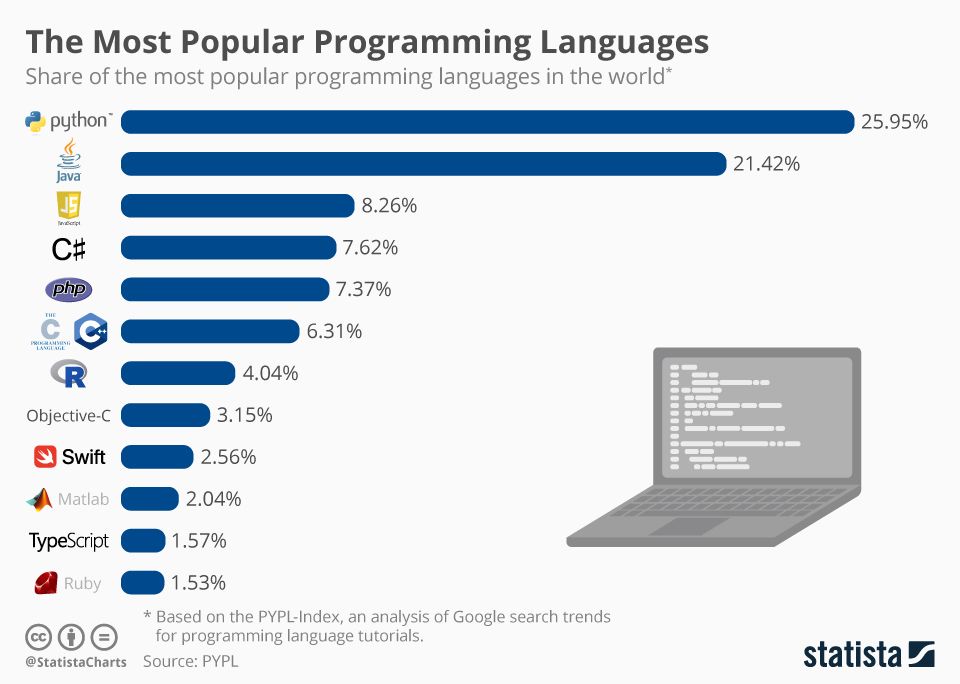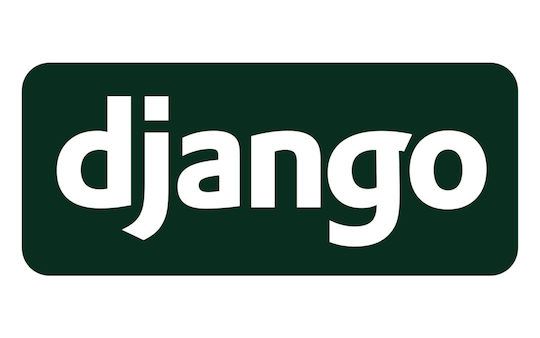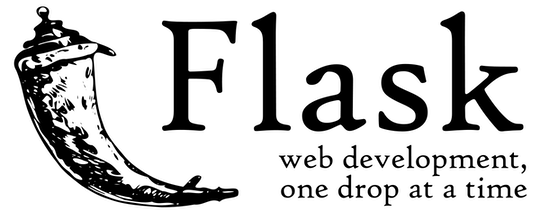Web development could be a hardworking task. There are a lot of coding languages that can be worthy of building a great product. So, which one must be chosen among all of them? If there’s a language that has gained cult status on web development frameworks and in the shortest span of time, it’s Python.
Any programming language's choice depends on how robust and responsive the end application is intended to be and the volume of coding and complexities it may involve. As an Object-Oriented Programming Language focused on Rapid Action Development (RAD), Python has motivated many emerging organizations and startups to choose it as a first-choice. In fact, developers have acknowledged the many significant advantages that endorse Python for web development and how it can quickly adapt to technology changes.
This blog post will introduce you to Python characteristics and how it inserts itself into the web development domain. We will discuss the benefits of using Python and describe the two most popular web development frameworks for it: Django and Flask.
What is Python?
Python was first created in 1991 by Guido van Rossum. Its philosophy highlights code readability, which is made clear by its simple syntax, namespaces, and rigidity towards indentation. The simplicity and readability of Python make it a favorite as an initiation language for many people. Tim Peters described the language beautifully using 19 aphorisms, which are known as the zen of Python:
Beautiful is better than ugly.
Explicit is better than implicit.
Simple is better than complex.
Complex is better than complicated.
Flat is better than nested.
Sparse is better than dense.
Readability counts.
Special cases aren't special enough to break the rules.
Although practicality beats purity.
Errors should never pass silently.
Unless explicitly silenced.
In the face of ambiguity, refuse the temptation to guess.
There should be one-- and preferably only one --obvious way to do it.
Although that way may not be obvious at first unless you're Dutch.
Now is better than never.
Although never is often better thn *right* now.
If the implementation is hard to explain, it's a bad idea.
If the implementation is easy to explain, it may be a good idea.
Namespaces are one honking great idea --let's do more of those!
Python is a simple but powerful language that runs smoothly on the most popular operating systems (Windows, Linux, and Mac). This language can conform to the programmer's coding style (functional, imperative, or object-oriented), meaning that developers can use the style that best suits the handed task. Python can be used not only for web development but also in many different fields (Artificial Intelligence, Deep Learning, and the Internet of Things) and in many different industries like Travel, Healthcare, Transportation,and Finance.
Many world-class software companies (like Google, Intel, Microsoft, Dropbox, Instagram, Facebook, and Spotify) use Python in their services and, if they do it, that’s got to mean something!
Why use Python for Web Development?
First of all, what is web development? Although it may seem hard to define, web development can be seen as a way of creating, building, and maintaining websites. Typically, web development involves a front-end (everything that interacts with the user) and a back-end - hidden from the regular user - which contains all the business logic and interacts with a database. Python inserts itself in web development as a back-end language, and it is usually combined with some other front-end language (frequently javascript) to build a whole website.
Back to our star question, the reason for using Python in web development is simple: it's an adaptable, versatile, and highly efficient programming language that offers dynamic typing capabilities. Python allows developers to create scientific applications, system applications with graphics, games, command-line utilities, web applications, and many more options. In fact, Python has been considered as "the most popular coding language" for the past years. Check the graphic below regarding 2019 researches over the most popular coding languages:

Another excellent reason for using Python is that it can be used and distributed for free. Known as an open-source product that works with a vast set of libraries, all the coding information needed is available on the Internet, which means that copying, embedding, and distributing Python in your products is unrestricted. This makes it extremely useful in the digital systems world once it conceives flexibility in the marketplace and allows companies to interact with many industry sectors. The result? A high-functioning and very successful product. Let's check the main benefits:
Benefits of using Python for Web Development
There are several factors that simplify the use of Python for web development:
-
Easy to learn: The simplicity of the syntax allows you to deal with intricate systems and ensure communication between developers working on the same project is much more efficient. In fact, a language that is easy to learn means that newbie developers or developers who don't have any experience in python can learn the language and join the development team faster.
-
Good readability: The fact that python is similar to our everyday language and its emphasis on readability means that its developers can write understandable code.
-
Complex tasks on the back-end: Python is an advanced coding language that allows you to do complex tasks on the back-end, including AI and Data Science as well as any other common task in other programming languages.
-
High popularity among web development: Usually, this characteristic can be seen as an index of how suitable/good a language is, but this is also an advantage for debugging our application. If you are struggling with some bug or don´t know precisely how to implement a new feature, there probably exists someone on the internet who already had the same problem, and finding a solution is only a few clicks away.
-
Wide range of libraries: There are a lot of python libraries that you can use to accelerate the development of your application. These libraries are packages of pre-written code available to everyone, so you don't have to reinvent the wheel. Some of the libraries are Numpy, scitLearn for data analysis and mathematical algorithms, and x for composable SQLqueries.
-
Good Frameworks: Some of the most popular web development frameworks for python include Django, Flask, Pyramid, Web2Py, and Turbogears. These frameworks are similar to toolboxes aiming to help you speed up the development of a web application. They contain packages and modules of standardized code to aid you in several application areas (URL routing, accessing the database, HTTP requests, and responses ).
In the next two sections, we will introduce and discuss the two most popular web development frameworks for python: Django and Flask.
What is Django?

Django is a back-end python web development framework for building complex and scalable websites, and it might be the reason for python´s rise in popularity in the last years. Django uses the model-view-template (MVT) architecture, a pattern based on a set of best practices for organizing your code.
Model: The model is what binds your application to the database. Normally a model represents a table in the database and defines what and how your application accesses the database. It simplifies the tasks of creating, deleting or updating table entries.
View: The view is the user interface. It renders the templates and defines what you see and the behavior of it. It is composed of HTML, CSS, and javascript files.
Template: Is the desired static HTML structure file with special syntax. It describes the inserted content.
Django follows a "batteries included" philosophy, which means that standard functionalities for building web applications should come with the frameworks. So, by just installing Django on the device, it will allow you to have access to: user authentication system; URL routing; the template engine; Object Relational-Mapper (ORM); and database schema migrations. This makes the initial application setup very fast and, if you require additional tools, Django has more than 4000 extra downloadable packages that can be used according to your project needs.
In addition to this, Django has a very detailed documentation. With it being around for a long time (2005), many helpful practice tutorials are readily available on the internet. Being proficient in Django will make application development pragmatic, fast, and clean. Over the years, many popular websites were built using Django - that's the case of Spotify, Instagram, and Youtube.
What is Flask?

Armin Ronacher developed Flask, in 2010, as a back-end Python framework widely known as Django's alternative for web development. Being more recent than Django, Flask's creator used the Python web development community to base his knowledge as he built this new framework.
After Flask's initial success, the author created "The Pallets Projects", a collection of libraries to help developers with their web development needs. Even if Django and Flask serve the same development purposes, they have a very different philosophy.
Flask comes only with two main components: The Jinja 2 template engine - to help build HTML templates - and the Werkzeug (a scary german word), a tool that provides HTTP routing support. Because of its simplicity, Flask is considered a microframework that doesn't force you to work with a large predefined set of tools like Django. Instead, Flask comes with the bare minimum, leaving the developer to decide what tools should be used. For this reason, Flask is considered a more pythonic framework of the two.
The Flask minimalistic approach means that applications can be developed with minimal boilerplate code and, when handled by experienced developers, Flask can produce extremely straightforward applications (code wise). However, the framework flexibility and the available tools allow the application's functionalities to extend as the project requirements change or evolve.
In short
Python is an amazing coding language that has been around for a long time. Its simple and straightforward syntax makes it ideal as a first-choice language for beginners, yet it is powerful enough to be behind some of the worlds' most popular websites.
Both of its most popular frameworks - Django and Flask - have their merits, and you can go with either of them to build your web application. Yet, if you are a less experienced developer, we recommend using Django once it provides an easier and faster web development. There's a popular saying in the Python community that is both funny and self-explanatory: "Pirates use Flask, The Navy uses Django."


